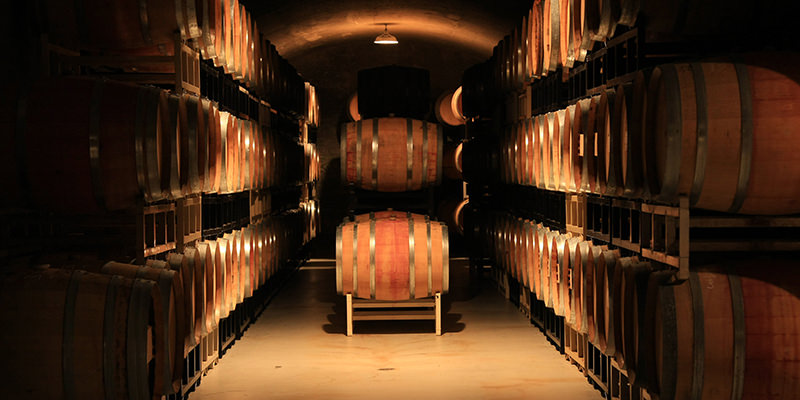The reason why wine cellars are “cellars” is because they tend to have a good balance of the three major factors for long-term wine storage: low light, constant (cool) temperatures, and a steady, moderate humidity.
So turning a room into a wine cellar is really just about figuring out how to bring the magic of the cellar (and ideally none of the creepiness) into another room.
If you do have a free room downstairs, that’s always a better choice—chances are, it’ll be cooler. And of course, the amount of effort you’ll have to put into monitoring light, humidity, and temperature will vary depending on where you live (Seattle vs. Santa Fe vs. Ft. Lauderdale, etc.). But we can give you some guidelines on how to at least “cellar-ify” a room in your place so it makes for a comfier home for your wine collection.
The UV light issue may be the easiest: don’t start your makeshift wine cellar in a mud room, or anywhere with too much light. Been looking for something to do with that depressingly windowless room? Well, now you’ve got it. There’s not a lot of damage a lightbulb can do, but it’s a good rule of thumb to keep light levels low generally. Enough so you won’t knock over your wine rack, but not so much that your bottles are warming up under the steady hum of some fluorescents.
Humidity is certainly a factor, but less pressing than either light or major temperature fluctuations, since humidity, or a lack thereof, only dries out the cork and leaves your bottle vulnerable to too much oxygen. Too much humidity creates mold—a risk, but it would take a lot of humidity and neglect to get there. The ideal humidity level is 70%, but you can find experts recommending 50 to 80%. If you live in a semi-average climate (i.e. you’re not storing wine in the Juneau or Phoenix), humidity levels shouldn’t be too hard to monitor. Especially with cool gizmos like this.
Temperature fluctuations aren’t as easy. According to Jancis Robinson, temperature fluctuation “is the most serious hazard for wine storage.” Imagine leaving a bottle of wine in your car on a hot day, or overnight in the cold. Those changes in temperature can impact the opening of the bottle (letting more oxygen in, which is bad) or even—if going from cold to hot—kind of “cook” the wine, evaporating away some of its delicious volatile compounds, basically changing its essential chemistry and leaving you with a flavor closer to something pruney and sharp.
What you need to create in your DIY cellar is consistency of temperature, which might mean a way of cooling it, or, if you live in the north, very gently warming it. The ideal temperature is 55 F, though a range is often given (Robinson recommends 50 to 59 F, but says you can go as high as 68 F. Not on purpose, since cooler is better, but that 68 F mark is still just barely safe). The basic rules of wine storage and temperature impact, according to Robinson: “the cooler wine is kept, the slower, and very possibly more interestingly, it will develop. The warmer it is stored, the faster it will mature (because heat inevitably speeds up all reactions and vice versa.”
One way to create consistency of temperature is a wine cooling system. A lower cost version will run you $900, give or take, and definitely looks like a 90s AC unit. Some are much more expensive, especially the kinds that run on a duct system—with the bulky, un-posh looking cooling unit kept nearby and tubes pumping and drawing warm and cool air as needed to maintain ideal temps.
Wine cooling systems aren’t a must: a bold DIY experimenter in Orange County, California, chose a closet for his wine cellar, protecting it from Southern California’s heat fluctuations with insulation. He calls it “passive cooling.” If you go this route, you’ll want a good digital read thermometer, so you can monitor the temperature of your juice.
Speaking of insulation, if you’re going to all this trouble to create perfect wine storage conditions in a room, you’ll want to make sure the door to that room is well-insulated so the interior temperature and humidity remain constant. Remember when your mom or dad used to yell at you for leaving the windows open with the A/C on? (“What? Am I paying to cool the outdoors??”) It’s the same exact principle here. However you create your perfect non-cellar wine cellar, you’ll want to close it off to the rest of your abode as securely as possible. Keep the magic inside. Yes, a creepy way to say it.

